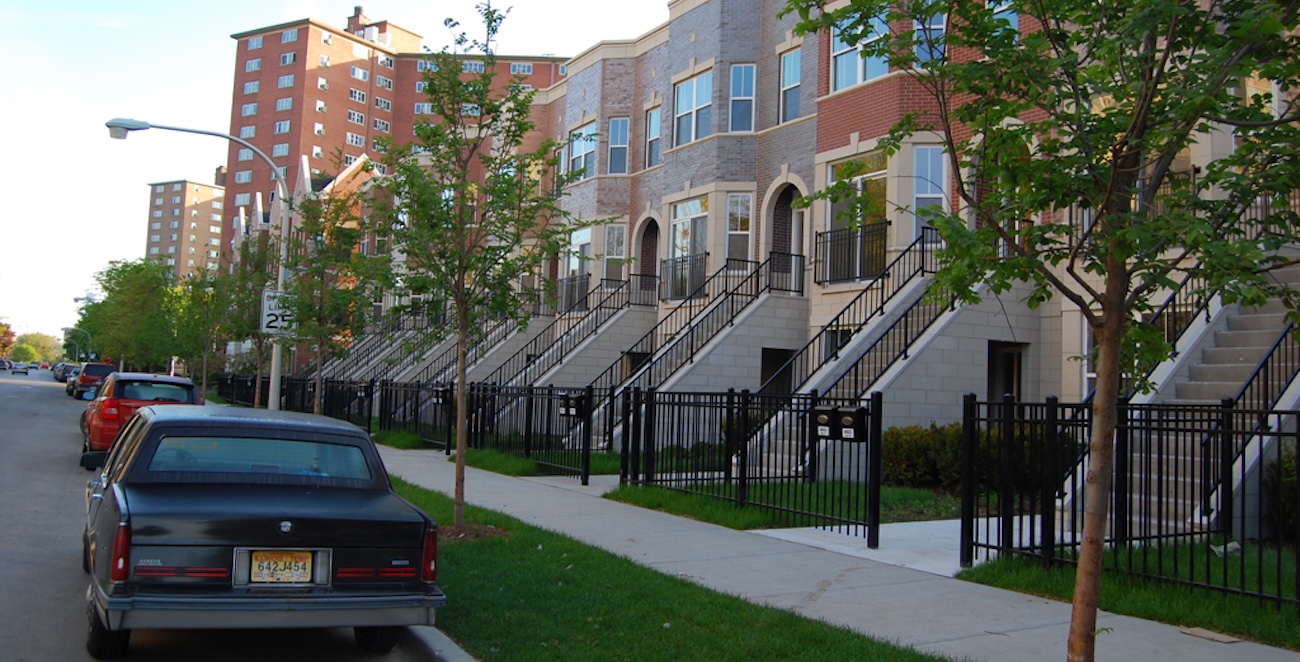Chicago’s northern suburbs are falling short in efforts to capitalize on the economic growth potential of building mixed-income TOD, according to our latest report. The report, Quality of Life, (e)Quality of Place, wasreleased today by CNT and the nonprofit Open Communities.
CTA and Metra stops anchor most north suburban downtowns. Quality of Life, (e)Quality of Place found that mixed-income housing in those downtowns can boost neighborhood property values, reduce traffic, increase diversity, and expand employment opportunities for those that don’t own cars – and provide alternative, affordable mobility options for those that do. Many of these neighborhoods currently lack options for lower-income households.
“Mixed-income TOD presents tremendous opportunity to attract and support new residents, increase tax bases, and promote more sustainable lifestyles in the northern suburbs, which have always been destinations for families seeking excellent education and quiet, peaceful lifestyles,” said Gail Schechter, Executive Director of Winnetka-based Open Communities. “Our report and guidebook can help municipal leaders, planners, and developers further enhance their communities by showing them ways to make room for diversity and grow local economies, thereby meeting the challenges of the 21st century.”

The guidebook finds that for moderate-income households in the Chicago region, housing and transportation costs exceed 56% of income.With the supply of rental units near transit under threat, these households face limited options to reduce housing and transportation costs. For example, around Davis Street in downtown Evanston, 850 new owner-occupied units came at the expense of 400 affordable rentals, pushing some residents away from an easy walk to transit and jobs.
Quality of Life, (e)Quality of Place offers solutions. It includes a list of policy recommendations communities can use to create a sense of place and become regional destinations. Communities can establish zoning incentives to encourage mixed-income units or create financing and acquisition tools to lower the cost of development. They can move from TOD vision to implementation with targeted infrastructure investments. They can adopt fair housing policies that attract a diverse range of people, cultures, and abilities, which will help make their communities stronger.
“As communities like Highland Park have taught us, mixed-income TOD succeeds when it appeals to neighbors’ vision of a community of choice,” said Kyle Smith, Economic Development Program Manager at Chicago-based CNT. “Residents in a mixed-income TOD can choose between housing units of all sizes and prices and can walk, bike, or take transit to a variety of jobs. There’s great potential for that throughout Chicago’s northern suburbs.”
Support for this project was provided by a grant from the Sally Mead Hands Foundation.





 Strengthening Transit Through Community Partnerships
Strengthening Transit Through Community Partnerships